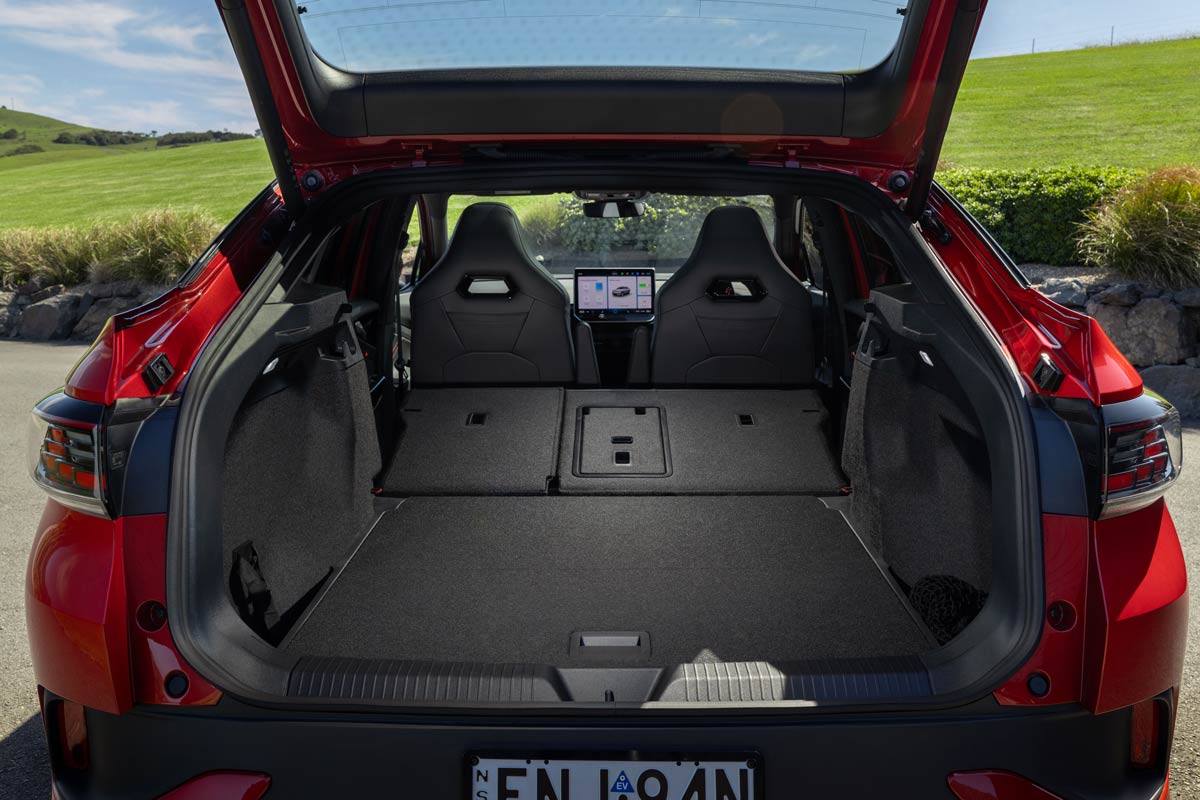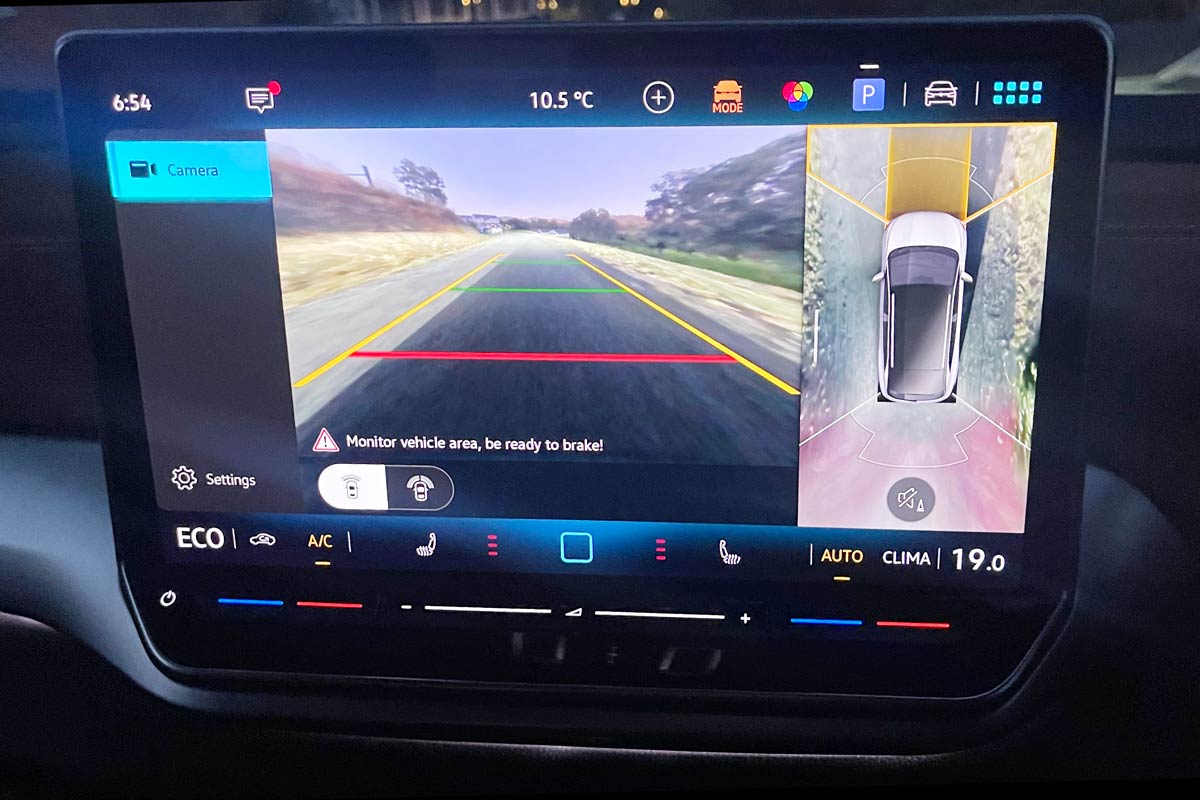2025 Volkswagen ID.4 Pro and ID.5 GTX review

There’s nothing quite like a high country pootle to clear the cobwebs, and that’s exactly what Volkswagen Australia delivered to herald the long-overdue arrival of the ID.4 and ID.5 electric SUVs—nearly a year later than first promised.
Volkswagen’s new EV duo—the ID.4 Pro and ID.5 GTX—are finally here, aiming to prove the brand isn’t asleep at the wheel when it comes to electric. Joining the already-on-sale ID. Buzz, they’re pitched squarely at the meat of Australia’s growing electric SUV market.
Backed by solid range figures, performance cred, and family-friendly practicality, could these electric entrants convince everyday Aussies to plug in instead of fill up? I took it for a spin around the back country roads from Canberra to Cootamundra to find out.
How much do the VW ID.4 Pro and ID.5 GTX cost?
Volkswagen has sharpened its pencils, pricing the ID.4 Pro from a wallet-friendly $59,990—a serious value play when you consider it undercuts the Tesla Model Y Long Range by over $10,000, and with similar driving range. Crucially for VW—which insists its diesel credentials are enough to keep it within the upcoming NVES limits—its pricing strategy puts the ID.4 within $500 of its segment-leading Tiguan 162TSI, aiming to convert petrol loyalists without sticker shock.
This entry-level ID.4 Pro boasts a single rear-mounted electric motor producing 210kW and 545Nm, paired with a 77kWh usable battery, delivering a WLTP range of 544 kilometres.
For buyers after something sportier, the flagship ID.5 GTX slides in at $72,990. It features a dual-motor all-wheel-drive system with a combined output of 250kW and 679Nm, powered by a 79kWh usable battery, offering a WLTP range of 522 kilometres. Both models support AC charging up to 11kW and DC fast charging up to 175kW.
Service intervals are 24 months (or 30,000km, whichever comes first) at a cost of $595 per service, and customers can purchase a care plan to lock that in for up to ten years.
Additionally, all ID range vehicles come with:
- 5-year unlimited kilometre warranty
- 8-year/160,000 kilometre battery warranty
- Guaranteed battery supply for 10 years from end of production
- Guaranteed repairability for 15 years from end of production
- Free battery health checks
These two initial variants will be joined by the mid-range ID.4 GTX and ID.5 Pro later in 2025. VW also says an Ampol charging loyalty program is in the works—more details will follow, so stay tuned.
What are the VW ID.4 Pro and ID.5 GTX like inside?
Inside, Volkswagen has clearly focused on delivering comfort with a sprinkling of luxury touches.
Inside, the cabin features Art Velours microfleece upholstery, heated and power-adjustable front seats with memory and massage functions, and a heated, leather-wrapped steering wheel. There’s no virtual heads up but a handy display behind the steering wheel with large bold font makes checking those vital stats a quick and easy affair.
You could be forgiven for thinking the brown and grey two-tone styling of the ID.4 Pro I drove might have the potential to date, but with fit and finish quality up to a high standard, the impression is more premium than drab. Gloss touch points, as always, would be the one misgiving—they might feel nice to touch but pity the person left to keep the car clean.
Seat adjustability is impressively versatile, covering everything from a low, sporty driving position to a commanding SUV-like perch. The firm yet comfortable seats offer robust support, enhanced significantly by a rolling lumbar massage function—very welcome for tackling long stints behind the wheel.
However, the manually adjustable thigh supports do stand out as a slight oversight in an otherwise tech-rich cabin. And, while some may welcome the airplane-style armrests, I wonder how they’d stand up to the daily grind if little ones are left climbing all over the cabin.










What equipment do the VW ID.4 Pro and ID.5 GTX come with?
Volkswagen hasn’t skimped on kit. As a baseline, Veedub has kitted the ID.4 Pro with an array of standard features that underline just how carefully VW has ignored the rules about what entry-level means.
The exterior boasts 19-inch Hamar black alloy wheels, Matrix LED headlights with adaptive high-beam, and 3D-effect taillights with dynamic turn signals. A panoramic glass roof with sunblind adds to the vehicle's aesthetic appeal, while the hands-free power tailgate proffers practicality.
Tri-zone climate control and 30-colour ambient lighting further add to the interior ambiance. The infotainment system includes a 12.9-inch touchscreen with voice control, and FM/DAB+ digital radio, complemented by a seven-speaker sound system and a wireless smartphone charger.
The ID.5 GTX takes the equipment game up a notch, featuring sports seats and 20" 'Ystad' alloys, plus a powerful 480-watt, 12-speaker Harman Kardon audio system, a boon for music buffs.
While we didn’t get a chance to try it out, GoConnect app connectivity is on hand via your smartphone with functions that include live status, battery State of Charge and vehicle location.
Unfortunately there’s just one spot to wirelessly charge the phone, and its position inside the low centre console may be aimed at driver safety but is a little inconvenient.
Another miss is the fact that the first tranche of ID.4s and ID.5s to hit our shores will do so without wireless Apple CarPlay and Android Auto. This will arrive in the second tranche post-July, but we can’t help but think that as VW says this cannot be upgraded post-delivery that this will slow initial sales.
Nevertheless, the German carmaker has also taken on the conversation about battery sustainability and maintenance by ensuring battery modules—not the whole battery pack—are individually replaceable, with assurances any such work required (if it is indeed required) would take place within Australia with parts on hand to minimise delays.
A full suite of charging equipment—now often an additional purchase with EVs from other carmakers—is thoughtfully included, with each vehicle coming standard with a trickle charger for home use and a Type 2 cable for public AC charging.
— Bridie Schmidt
How much storage do the VW ID.4 Pro and ID.5 GTX have?
Volkswagen’s ID.4 Pro and ID.5 GTX might be built on a dedicated EV platform, but they haven’t followed the frunk trend seen in other electric models. That’s right — there’s no front trunk under the bonnet. Instead, VW has opted to house auxiliary systems like the HVAC unit and electrical components in that space, prioritising cabin packaging and rear boot capacity.
In the back, however, both models offer a solid amount of usable storage. The ID.4 Pro provides 543 litres of boot space with the rear seats in place, expanding to 1575 litres when the 60:40 split-fold seats are folded down. The coupe-styled ID.5 GTX slightly compromises on vertical space due to its sloping roofline but still manages 549 litres, expanding to 1561 litres with seats down. The numbers are a little lower than the Tiguan’s 615/1655 litres, but not unforgiveable.

2025 Volkswagen ID.5 GTX model shown
Instead, there’s also a generous underfloor compartment for stowing the included charging cables — a thoughtful touch, especially since the absence of a frunk means no bonus storage up front. Both models include a powered tailgate for ease of access, and wide boot openings make loading bulky gear relatively hassle-free. For most Aussie families the cargo space should be more than up to the task.
How safe is the VW ID.4 Pro and ID.5 GTX?
Safety credentials are robust, featuring VW's intuitive Travel Assist system, which cleverly combines adaptive cruise control and lane-keeping functionality.
Additional safety features include Side Assist for blind-spot monitoring, Emergency Assist for critical intervention scenarios, proactive passenger protection measures, and even an intelligent system for braking to avoid collisions with oncoming vehicles during turning manoeuvres. Front and rear parking sensors and a clear 360 degree reversing camera round out this extensive safety package.
So far, the VW ID.4 and ID.5 have been tested by ANCAP, garnering five out of five stars for the New Zealand market. VW says that due to similarities with safety regulations over the ditch, there are no hurdles envisioned being passed for Australia also.

2025 Volkswagen ID.4 Pro reverse camera
What are the VW ID.4 Pro and ID.5 GTX like to drive?
Behind the wheel, these electric siblings don't disappoint. The ID.4 Pro is powered by a solid 210kW electric motor delivering an impressive 545Nm of torque. The result? A spirited 0-100km/h dash in just 6.7 seconds, easily edging out its petrol counterpart, the Tiguan 162TSI—as was shown in our stint on the Cootamundra runway. The rear-wheel-drive setup delivers assured, linear acceleration and a confident feel around bends.
Step up to the dual-motor ID.5 GTX, and an even sportier drive presents itself thanks to its 250kW 4MOTION all-wheel-drive setup, boasting a rear-biased torque split (up to 80 percent can be sent to the back axle), that ensures responsive handling, particularly on corners. It confidently achieves a 0-100km/h sprint in just 5.4 seconds and feels secure, especially through twisty terrain.
We tested this thoroughly on country roads and were suitably impressed with both models’ ability to overtake swiftly, and with the confidence that comes with stable handling. That said, the 15 levels of suspension is a bit of overkill; three or maybe five would suffice.
While VW has not included true one-pedal regenerative braking options, a push from “D” to “B” on the gear shifter forces braking by taking the foot off the accelerator as opposed to putting it on the brake.







Open Road’s take on the VW ID.4 and ID.5
While Volkswagen has dragged its feet getting into the growing electric car market in Australia, now that it has finally done so with something other than the ID. Buzz electric van, it has done so with aplomb. Don’t get me wrong—an all-electric Kombi is more than welcome especially for those wanting to relive the 60s in zero emissions style, but ultimately its $100k plus price tag is out of reach for most.
The ID.4 Pro on the other hand, offers something that is tangibly a decent alternative, both in specs and pricing, to VW’s best-selling Tiguan. The fact VW is not bothered that it might cannibalise the Tiguan’s sales speaks to a brand that is ready to dial down its emissions and appeal to a new breed of drivers. Combine that with satisfying handling and a generous platter of features, and Veedub may just be onto something.
Jump up to the ID.5 GTX and you’re just showing off—but with good reason. The only shame is that if you want wireless Apple Carplay or Android Auto, it might be better to wait a few months.
What we liked
- Strong and engaging performance, particularly in the sporty GTX variant
- Generous standard equipment and premium comfort features including two charging cables
- Very decent real-world driving range perfect for long-distance Australian touring
What could be better?
- Wireless CarPlay feature only available on models arriving later in the production cycle
- Manually adjustable thigh support feels out of place in an otherwise premium interior
- Explicit one-pedal driving levels for EV-style regenerative braking







